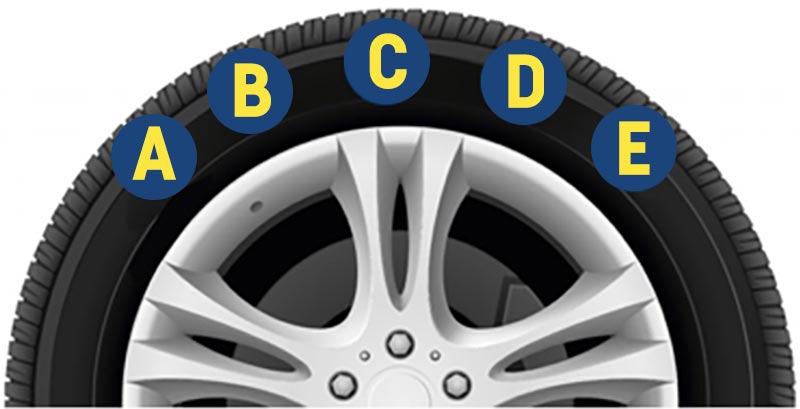
Learning about load and speed rating on tyres with Landsail
ExplainerHere at Landsail Tyres, we always recommend drivers complete a monthly tyre check. But one element which is often overlooked is checking the tyres’ load and speed rating, to ensure tyres are fit for purpose.
To make sure all drivers feel informed to complete a thorough tyre check, we’re going to uncover more about load and speed rating so everyone can drive with peace of mind, that their tyres are running safely.
WHAT DOES LOAD AND SPEED RATING MEAN?
The tyre load rating corresponds to a maximum load (in kg) that can be carried by a single tyre.
The tyre speed rating indicates the maximum speed at which a tyre can carry its maximum load.
Across the range, Landsail’s research team has designed and engineered specific features to deliver best in class performance and safety, including across load and speed ratings.
WHY REGULARLY CHECK YOUR LOAD AND SPEED RATING?
As part of your frequent tyre checks, you must make sure you’re not overloading your vehicle’s tyres. Exceeding the recommended weight limit on tyres can lead to damage and accelerated wear. In severe circumstances when a tyre consistently bears excessive weight, it heightens the risk of a blowout, posing a hazard while driving.
Meanwhile, as the speed rating states the maximum speed at which a tyre can carry its maximum load, if you’re driving behaviour sees you consistently running a tyre at speeds higher than its rating, you can also shorten a tyre lifespan.
| Rating | Speed (km/h) | Speed (mph) |
| B | 50 | 31 |
| C | 60 | 37 |
| D | 65 | 40 |
| E | 70 | 43 |
| F | 80 | 50 |
| G | 90 | 56 |
| J | 100 | 62 |
| K | 110 | 68 |
| L | 120 | 75 |
| M | 130 | 81 |
| N | 140 | 87 |
| P | 150 | 93 |
| Q | 160 | 99 |
| R | 170 | 106 |
| S | 180 | 112 |
| T | 190 | 118 |
| U | 200 | 124 |
| H | 210 | 130 |
| V | 240 | 149 |
| W | 270 | 168 |
| Y | 300 | 186 |
| ZR | >240 | >150 |
But remember, the speed rating should never be misconstrued as the safe maximum speed for your vehicle or as approval to travel faster than the legal speed limit. A safe driving speed takes into consideration other variables, including road laws, weather and road conditions, as well as the mechanical capabilities and condition of your vehicle.
WHERE CAN I FIND MY TYRE RATINGS?
If you look at the side wall of your tyre, you will see the load index and speed index. They appear next to one another: the load index is a two- or three-digit number, while the speed index is a single letter.
If you take a look inside your vehicle handbook, you’ll be able to see the load rating and corresponding maximum tyre loads, as well as what the speed rating alphabetical symbol corresponds to.

Whilst you’re looking at the sidewall, you will also find additional lettering which reveals the construction of a tyre and what vehicle it is suitable for (see annotated image label ‘B’). For example:
- P: Passenger car
- LT: Light truck
- C: Van commercial tyre
- XL, HL or reinforced: Tyres with a higher load capacity than normal for their dimension. Such tyres need to be replaced by the equivalent (example: a HL tyre by another HL tyre)
- T: Temporary (spare wheels)
It’s also important to note the speed rating is based on the weight of the individual tyre.
IF I HAVE A TRUCK, HOW DO I READ DUAL RATINGS?
For light truck tyres, as they are engineered with a dual back wheel system (where two tyres are side by side), the load index on light truck tyres is slightly different. The dual back wheel system is a safety feature which gives trucks extra peace of mind should a tyre fail.
Often, they have two ratings separated by a slash – the first number is the load rating when the tyre is used alone and the second is the rating when it is used as a dual tyre.
TIME TO BUY A NEW SET OF TYRES?
If you’re in the market for a new set of tyres, first things first, open the car’s handbook and find out the car tyre load capacity. By using these guidelines, you’re already heading in the right direction to ensure you’re going to select the right tyre for your car.



